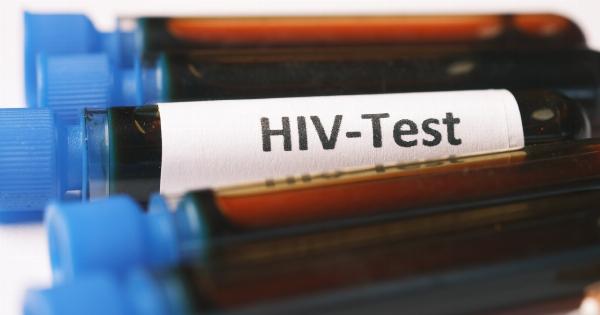HIV (Human Immunodeficiency Virus) is a chronic, lifelong disease that weakens the immune system.
It is a sexually transmitted infection that can also be transmitted through contaminated blood, sharing needles, or from an infected mother to her child during childbirth or breastfeeding. In this article, we will explore the progression of HIV and the symptoms to look out for.
1. Acute HIV Infection
Acute HIV infection, also known as primary HIV infection, occurs within 2-4 weeks after contracting the virus. During this stage, individuals may experience flu-like symptoms, including:.
- Fever
- Fatigue
- Sore throat
- Swollen lymph nodes
- Rash
- Muscle and joint aches
These symptoms can last for a few days to several weeks. Some people may have no symptoms at all, making it hard to diagnose HIV during this stage. It is important to get tested if you suspect you may have been exposed to the virus.
2. Clinical Latency
After the acute stage, HIV enters a phase called clinical latency, also known as chronic HIV infection or asymptomatic HIV infection. During this period, the virus is still active but reproduces at very low levels.
Most people do not experience any significant symptoms during this stage, which can last for several years if left untreated.
3. Early Symptoms of HIV
As HIV progresses, individuals may begin to experience the following symptoms:.
- Persistent fatigue
- Swollen lymph nodes
- Fever
- Night sweats
- Weight loss
- Recurring yeast infections
- Persistent skin rashes and sores
It is essential to note that these symptoms can also be caused by other illnesses. However, if you have engaged in risky behaviors or have been exposed to HIV, it is crucial to get tested and consult with a healthcare professional.
4. Progression to AIDS
If left untreated, HIV can progress to AIDS (Acquired Immunodeficiency Syndrome). HIV weakens the immune system, leaving individuals vulnerable to opportunistic infections and certain types of cancers.
The progression to AIDS is usually determined by a CD4 cell count (a type of white blood cell that helps the immune system fight infections). When the CD4 count falls below 200 cells per cubic millimeter of blood, a person is considered to have AIDS.
5. Advanced Symptoms of HIV/AIDS
As HIV progresses to AIDS, individuals may experience the following advanced symptoms:.
- Persistent diarrhea
- White spots on the tongue or mouth
- Persistent coughing and shortness of breath
- Severe and persistent headaches
- Mental health issues such as confusion and memory loss
- Unexplained weight loss
- Blurred vision
At this stage, the immune system is severely damaged, and the risk of developing opportunistic infections and certain cancers significantly increases.
6. Seeking Medical Care
If you suspect that you may have been exposed to HIV or are experiencing any of the symptoms mentioned, it is crucial to seek medical care.
Early diagnosis and treatment can greatly improve the prognosis and quality of life for individuals living with HIV.
7. HIV Testing
HIV testing is the only way to confirm whether someone is living with HIV. There are various types of tests available, including:.
- Antibody tests
- Antigen/antibody tests
- Nucleic acid tests (NATs)
It is important to get tested, even if you do not have any symptoms, as early detection allows for timely intervention and early treatment initiation.
8. Treatment and Management
While there is no cure for HIV, it can be managed effectively with antiretroviral therapy (ART).
ART involves taking a combination of medications daily to suppress the virus’s replication, maintain immune function, and prevent the progression to AIDS. Adherence to ART is crucial to achieve viral suppression and maintain overall health and well-being.
9. Prevention
Preventing HIV transmission is essential. Some prevention strategies include:.
- Using condoms during sexual intercourse
- Practicing safe injection practices and avoiding sharing needles
- Getting tested regularly for HIV and other sexually transmitted infections
- Using pre-exposure prophylaxis (PrEP) for individuals at high risk of contracting HIV
- Using post-exposure prophylaxis (PEP) within 72 hours of potential exposure
Educating oneself and others about HIV transmission, prevention, and destigmatizing the disease are also crucial in preventing its spread.
10. Support and Resources
Living with HIV can be challenging, but there are numerous support groups, counseling services, and resources available. It is important to reach out and connect with others who understand the experience of living with HIV.
Support can come from healthcare professionals, community organizations, online forums, and peer-led groups.


























